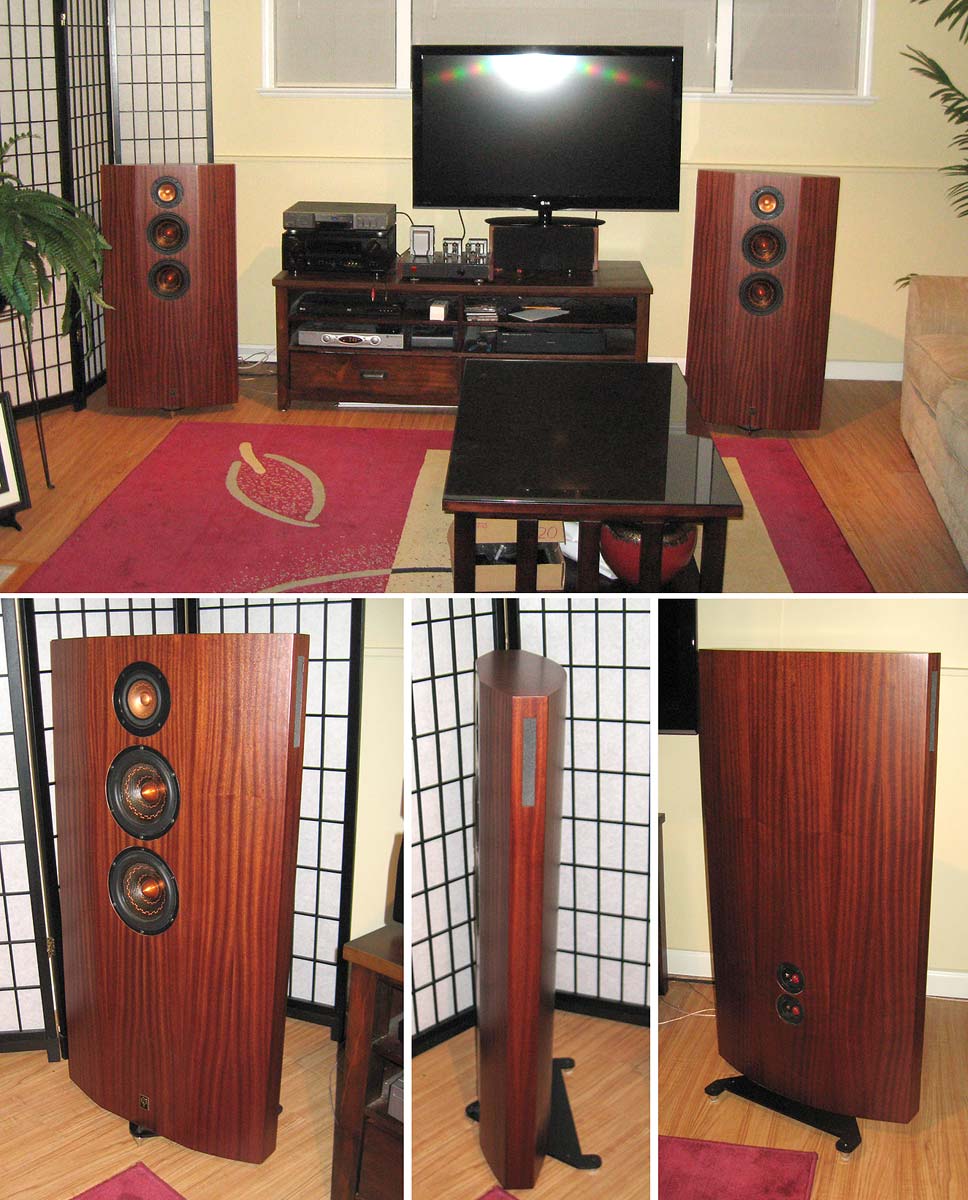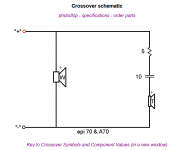I'll suggest the OSMC (yes, my pet...):
https://github.com/mbrennwa/osmcdoc/blob/master/osmc_paper.pdf
Earl
Thanks mbrennwa, I had a look at the OSMC and it looks absolutely fab. The stands also look distinctive. Checked the cost of a midrange speaker and that itself will cost me an arm and a leg.I'll suggest the OSMC (yes, my pet...):
https://github.com/mbrennwa/osmcdoc/blob/master/osmc_paper.pdf
Thank you, will read through the documentation.
Cheers,
Earl
I use the Baby Huey EL84 amp as my main amp and for speakers use the Altec 414 & 802d in a two way configuration with petite onkens (414) and the altec 32c horn(802d) . The 414's are essentially run full range running into the 802. didn't think it would work but sounds really nice
Crossover is here: JE Labs Altec 414 x-over
Crossover is here: JE Labs Altec 414 x-over
Hi Dave, what would be your suggestion for the distance between the speakers and the person?
I would place my FHXL in a 15 x 4 x h2,85 meters room, on a long wall pointing the other one, a bit off-center of the lenght.
I was thinking to have them around 4 meters apart pointing just in front of the sofa.
They will reproduce rock music as entertainment during dinners with friends, sometimes I will play them loud with different genres, sometimes dvds of live concerts at medium volume, rarely movies.
I would place my FHXL in a 15 x 4 x h2,85 meters room, on a long wall pointing the other one, a bit off-center of the lenght.
I was thinking to have them around 4 meters apart pointing just in front of the sofa.
They will reproduce rock music as entertainment during dinners with friends, sometimes I will play them loud with different genres, sometimes dvds of live concerts at medium volume, rarely movies.
Tje easy answer is where they sound best. Usually i have found just a bit further away than apart. How close to the wall/corner will help tune the bottom.
dave
dave
Indeed, various EPI models used just thatSeries cap is a cross-over. LP on woofer built-into the natural response. Very common approach.
dave
Attachments
The question of what speaker for a valve amplifier is often open and misunderstood. There may be less going on than some would make out. What is your interest.. sensitivity, distortion, tone? A lot of valve amplifiers are reasonable voltage sources and don't need impedance compensation.. if not then you can, or even equalise to taste.
Hi,
I seem to have started down the track of something that now is getting beyond my little brain. To answer AllenB's questions, and after reading through earlier posts, I believe I'd like to go in the order of sensitivity, tone, distortion., comfortable listening is what I'm after and not jarring boom! Of course there is the element of cost that I'd like to keep moderately low/high? This is my second speaker project, the first being a pair of randomly assembled bookshelf speakers for an EF86+PCL86 amp about 10+ years ago. Not trying to be a miser here, but I'm trying to define price vs speaker (unit) quality and learn building from scratch as my first lesson.
I understand that there is lot of theory to the final result, and I'm learning it as I go along, and maybe build another amp+ speaker later. But, so as not to be overwhelmed by various aspects, how could I reach the goal?
I seem to have started down the track of something that now is getting beyond my little brain. To answer AllenB's questions, and after reading through earlier posts, I believe I'd like to go in the order of sensitivity, tone, distortion., comfortable listening is what I'm after and not jarring boom! Of course there is the element of cost that I'd like to keep moderately low/high? This is my second speaker project, the first being a pair of randomly assembled bookshelf speakers for an EF86+PCL86 amp about 10+ years ago. Not trying to be a miser here, but I'm trying to define price vs speaker (unit) quality and learn building from scratch as my first lesson.
I understand that there is lot of theory to the final result, and I'm learning it as I go along, and maybe build another amp+ speaker later. But, so as not to be overwhelmed by various aspects, how could I reach the goal?
I made TQWT enclosures for the full-range Philips AD3800AM loudspeaker. The "A" in the code means it's the 800 Ohm version, the "M" in the code means it has a whizzer-cone to extend the high frequency response. But this loudspeaker also comes as the AD3800M, which is the 5 Ohm version with whizzer-cone. They can handle 6 Watt so they are fine for smaller SE tube amps.
Here's some data on this loudspeaker (which ofcourse is not being manufactured anymore but there are many still in circulation, especially in The Netherlands, because Philips used them a lot in their bigger tube radio's):
Philips AD3800
Eventhough the resonance frequency of this loudspeaker is not so low (75 Hz, but if they had some use in their lifetime this frequency often is a bit lower than 75 Hz) they sound very well in these TQWT enclosures and with a tube amplifier.
This is the plan (which I found on the internet a long time ago). The diameter of the opening for the loudspeaker should ofcourse be chosen so that the AD3800 fits in (or any other comparable fullrange loudspeaker) so it's not exactly the 157 mm as stated in the plan:

Here are a picture of the ones I have built (the unpainted one) and a picture during the build. The sizes are for MDF wood with a thickness of 18 mm. I just used (plenty of) woodglue to glue it all together. When using MDF, which has a very flat surface, the parts just stay upright during construction/drying of the woodglue. The picture doesn't show the foam yet which has to bee attached to the insides for some dampening.:
TQWT with Philips AD3800AM
Here is a link to the site of someone else who also made these enclosures and also used the AD3800AM in them:
Philips AD3800AM TQWT
EDIT: I didn't read the beginning of this thread good enough. I just found out that the Baby Huey is a pp amp, so probably the output power is higher than 6 Watt. If so, an other type of fullrange loudpeaker would have to be used.
Here's some data on this loudspeaker (which ofcourse is not being manufactured anymore but there are many still in circulation, especially in The Netherlands, because Philips used them a lot in their bigger tube radio's):
Philips AD3800
Eventhough the resonance frequency of this loudspeaker is not so low (75 Hz, but if they had some use in their lifetime this frequency often is a bit lower than 75 Hz) they sound very well in these TQWT enclosures and with a tube amplifier.
This is the plan (which I found on the internet a long time ago). The diameter of the opening for the loudspeaker should ofcourse be chosen so that the AD3800 fits in (or any other comparable fullrange loudspeaker) so it's not exactly the 157 mm as stated in the plan:
Here are a picture of the ones I have built (the unpainted one) and a picture during the build. The sizes are for MDF wood with a thickness of 18 mm. I just used (plenty of) woodglue to glue it all together. When using MDF, which has a very flat surface, the parts just stay upright during construction/drying of the woodglue. The picture doesn't show the foam yet which has to bee attached to the insides for some dampening.:
TQWT with Philips AD3800AM
Here is a link to the site of someone else who also made these enclosures and also used the AD3800AM in them:
Philips AD3800AM TQWT
EDIT: I didn't read the beginning of this thread good enough. I just found out that the Baby Huey is a pp amp, so probably the output power is higher than 6 Watt. If so, an other type of fullrange loudpeaker would have to be used.
Last edited:
These properties are some of the things people can mean when asking about amp/speaker combinations, however they really don't have much to do with the amp. I don't think this is really have a question about amps and we should put this thread in speakers.. what do you think?I believe I'd like to go in the order of sensitivity, tone, distortion.,
Thanks AllenB. Yes, apologies. This would be better in the speakers section. I will try to move it there.These properties are some of the things people can mean when asking about amp/speaker combinations, however they really don't have much to do with the amp. I don't think this is really have a question about amps and we should put this thread in speakers.. what do you think?
Earl
You could try these. Cabinets may be little tricky, but would be very worthwhile.
http://www.troelsgravesen.dk/PMS.htm
http://www.troelsgravesen.dk/PMS.htm

These came from the same inspiration (bur are a higher level of execution, at least as far as the enclosure).

dave
Thanks, These look awesome. Will check with the WAF/SAF.You could try these. Cabinets may be little tricky, but would be very worthwhile.
http://www.troelsgravesen.dk/PMS.htm
I'm thinking about using 10" Eminence woofers for my next build. Non-conductive VC former, high Qms, and low coil overhang, so that's 3 potential sources of distortion improved up-front. Low Xmax is a compromise for some, but I figured that realistically I never need more than +/-3mm of cone movement in my current set-up (also 10" but with alu former and rubber surround).
Another thing that looks nice about the Eminence woofers is that the low frequency resonance is a little bit out-of-band, and looks about right give a meaningful boost for amplifiers with high output impedance -- usually tubes, but my plan is to build a low power solid state amp that does that. Feedback from the output stage would have to be low, or avoided altogether, or buffered with a current sense resistor, so that reverb from coil microphonics don't interfere.
Another thing that looks nice about the Eminence woofers is that the low frequency resonance is a little bit out-of-band, and looks about right give a meaningful boost for amplifiers with high output impedance -- usually tubes, but my plan is to build a low power solid state amp that does that. Feedback from the output stage would have to be low, or avoided altogether, or buffered with a current sense resistor, so that reverb from coil microphonics don't interfere.
Hi Dave. Nice looking speakers. What are the drivers? Is that a vent on the side?
These came from the same inspiration (bur are a higher level of execution, at least as far as the enclosure).

dave
- Home
- Loudspeakers
- Multi-Way
- Speaker unit suggestions for Valve Amplifier (Baby Huey)
